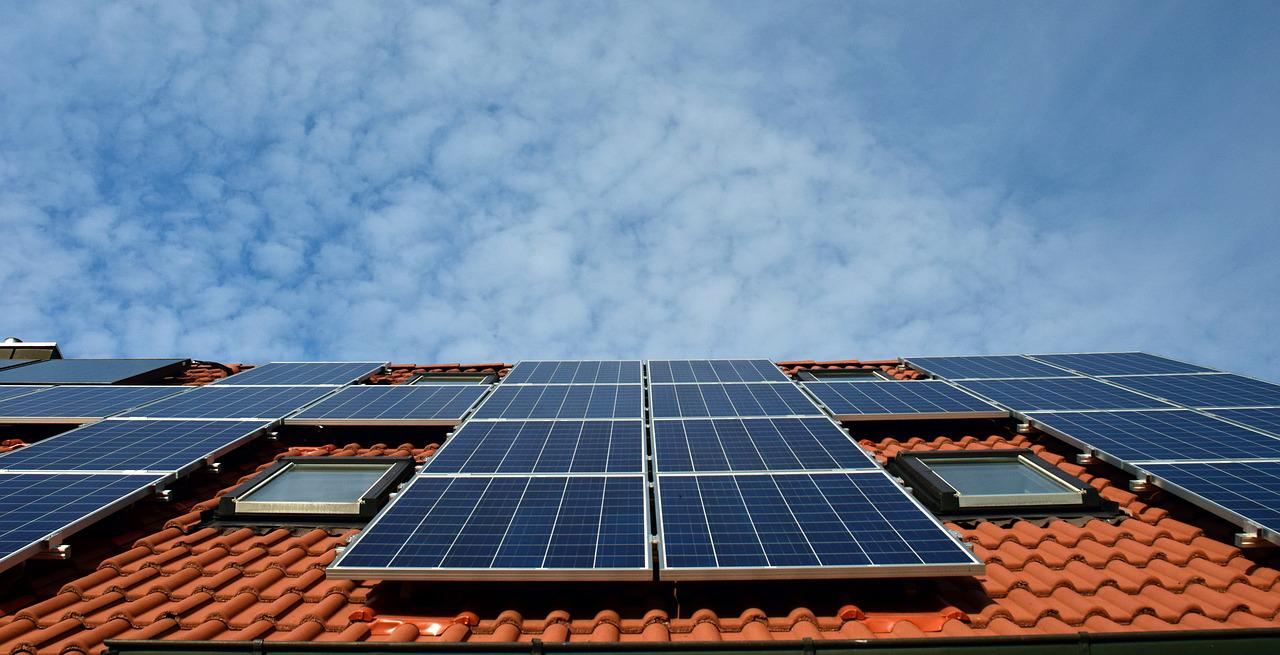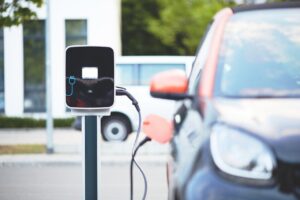
The sun gives the Earth more energy every hour than the entire world uses in a year. Solar panel systems for homes are becoming more popular and are getting cheaper at the same time. Solar Panel is becoming more popular among homeowners, and you may have even seen a few systems being put in place in your own neighbourhood.
First, let’s talk about the basics. What is a solar panel, first? A solar panel is a solar cell-based panel. Solar cells are the most important part of turning light into electricity, and most of them are made of crystalline silicon.
Most of the time, there are 32 to 96 solar cells in each solar panel. Solar panels are called polycrystalline, monocrystalline, or thin film based on how the solar cells are made. Crystalline solar cells are used to make the first two types, which are also the most common types of solar panels. Thin films are made of amorphous silicon, which is the third type. Aside from the typical solar panel with a frame, there are other products that can be used in homes.
How solar panels turn light into power
Solar cells turn the huge amount of solar energy that the earth gets every day as sunlight, or photons, into electricity. Most common commercial solar solutions turn sunlight into electricity with an average efficiency of 3–17%.
Photons would be what we would get if we could “break” sunlight into the smallest pieces possible. The smallest bits of energy come from the sun.
Solar cells convert sunlight into energy
First, solar cells have an anti-reflective coating on the top layer, which helps them get as much light as possible. Just below is the main layer of a solar cell, which comprises two layers of silicon stacked on top of each other. These two layers are made especially. So that the top layer has more electrons than the bottom layer, which has less. Extra energy is needed for the extra electrons to move from the top layer to the bottom layer. The energy that comes from sunlight hitting solar cells comprises photons. An electric current is created when the sun is shining.
Solar panels gather daytime sunlight
More electricity is made by the solar panel when more sunlight hits it. This means that on cloudy, rainy, or snowy days, when there is less sunlight, solar panels can still make some electricity, but not as much as they can on a sunny day. Solar panels can’t make electricity at night, but you can store any extra energy you get during the day in a big battery. It’s important to put solar panels in a spot where they can get direct sunlight and won’t be blocked by things like trees.
Different parts of a home system
To have a complete system that will give your home electricity, you need the following parts:
- Solar panels
- Structures for putting up solar panels
- Inverter
- A control panel for the electricity with the right switches and circuit breakers
- DC and AC electrical cables
- Power metre
Now, let’s look at each of these parts individually: As we’ve already said, when the solar panels are exposed to light, they make electricity. They make DC (direct current) electricity. But in order to use the electricity that the solar panels make, we need AC (alternating current) electricity, which is the type of electricity that your home and the power grid use.
So, we need an inverter! An inverter changes the direct current (DC) electricity that the solar panels make into alternating current (AC). The solar panels are connected one at a time in strings.
Power metre, electrical panel, and wiring An electrical panel with the switches, circuit breakers, and wiring must be set up so that the AC electricity can be sent to the grid or to the house. A power metre is used to measure how much electricity the photovoltaic system produces.
Many modern systems come with helpful apps for your phone that let you know exactly how much energy you’re making. There are two main types of residential solar systems: off-grid and on-grid.
Off-Grid System
In an off-grid system, the electricity made by the solar system will cover all of a home’s electricity needs since the home is not connected to The Power Company’s electrical grid at all. To do this, you can use big batteries that can store any extra electricity made during the day. The main problem with an off-grid system is that it is more expensive than a system that is connected to the power grid. This is because batteries add about 20–30% to the cost of an off-grid system. You might not be able to live off the grid in many places, so you’ll need to check.
On-Grid System
In an on-grid system, the solar panels are put on a house that is connected to the main power grid. The electricity made by the solar panels can either be used to power the house or sent to the power grid if it is made over what is needed.
The next thing is net metering. With net metering, your monthly electricity bill is based on the sum of how much energy you use and how much energy your solar panels give off each month. If you make more energy than you use, the utility company will pay you! For example, if your solar panels produced 3,000 kWh more than you needed on a sunny day and you used 4,000 kWh from the grid on a cloudy night, you will only be billed for 3,000 kWh. Net metering policies sometimes pay you more for the electricity your solar panel system makes than what you pay for electricity from the grid.
How much will your bill savings be?
How much you save depends on several things, Of course, How much power your home or business uses The average U.S. home used 10,766 kWh of electricity per year, which is about 897 kWh per month. A typical home solar installation should be able to cover 70–90% of your monthly usage. The exact amount you save on your electricity bill will depend on other things. If your family has electric cars that need to be charged every day, you will need a lot more electricity.
Where you live makes a big difference. Sunnier is better. In one case. If your home is in a hot and sunny state like California, a 5Kw installation with 20 solar panels can produce about 8,000 kilowatt hours per year. If your home is in a less sunny state like Connecticut, the same system will only produce about 6,000 kilowatt hours per year. Based on an average annual electricity use of about 10,000 kilowatt hours, this means that a 5 kW system could cover between 60 and 80% of your electricity bill, depending on how sunny your area is. You just need to put your address into a great online tool.
It also figures out how much electricity you can make and how much you can save on your electric bill. How many solar panels you can put on your roof depends on how much space you have and where on your roof there is no shade and the right direction.
You can also read Electric fireplaces make any room warmer and prettier
The average price of a home system
In 2021, the average cost of a residential solar panel will be $2.53 per watt. This means that a 6-kilowatt solar panel system will cost an average of $14,160 before any tax credits or other incentives.
The Best Size System For You
Most of the cost goes to the equipment, but permits and labour are also considered. You can take advantage of the current federal solar tax credit, and your state or utility company may also offer you other incentives. These prices will vary depending on the brand of solar panels, the size of your installation, your installer, and your state, but this should give you an idea of what to expect. Over time, the price of solar has decreased.
Comparing quotes from many solar contractors is the best method to get a competitive pricing. Some great services for doing this are linked in the description below. A solar energy system provider can help you choose the best system for you based on factors like cost, how much electricity your home or business uses, and how sunny your area is. This will help you save as much money as possible on your electricity bills. Don’t forget that there are many brands of solar panels and solar inverters to choose from, and a good installer can help you choose the best system for your budget.
Roofs that are right for solar panels
The roof’s slope and direction are the most important factors in deciding whether or not it is a good place for solar panels. Your solar energy company can figure out exactly how much sunlight your roof will get all year long. Even though solar panels only weigh about 2 to 4 pounds per square foot, structural safety is another important thing to think about.
For new homes, a static evaluation of the roof must be part of the design of the whole structure for mounting the solar panels. For homes that are already built, you need the help of a professional structural engineer to check the roof structure and figure out how much weight the structure can hold.
Maintenance and Running
Solar installations need very little maintenance because there are almost no moving parts. But the system needs to be maintained regularly to make sure it works well. Solar panels need to be checked regularly for signs of damage, dirt buildup, or shade.
Solar Panels Need to be Cleaned
Even though solar panels are usually built and set up so that rain can clean them, they should be cleaned by hand if dust or anything else is building up on them.
Conclusion
A real source of renewable energy Your electricity bill will go down, and you’ll be protected if prices go up. Low maintenance cost. Government incentives as money They don’t make any noise, don’t have any moving parts, and don’t pollute the air. They last a long time and are reliable. Most of the time, the manufacturers of solar panels guarantee that they will work well for more than 25 years. Initial costs, but once the cost of installation is paid off, the marginal cost goes down to zero. Since it depends on the weather, it is an intermittent source of energy that can’t be counted on for important tasks.


